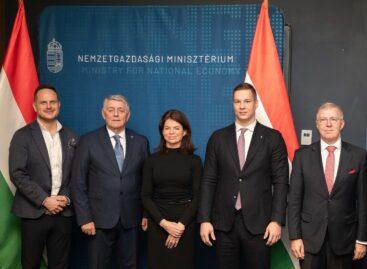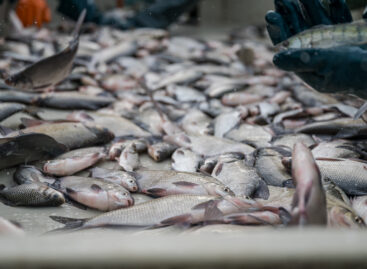Hungarian economy will bottom out from the last year’s “growth hole”
According to the forecast prepared by GKI Economic Research Co. in co-operation with Erste Bank the internal and external balance of the economy will improve further considerably in 2008.
The inflation will abate significantly
not sooner than around the end of the year, if by that time the
global economy will stabilize, the interest rates will decrease and
the forint will strengthen.
In the spring of 2008 the state of
the world economy became critical, owing to the high and still
growing food-, raw material-, and energy prices, the weakening
dollar, the danger (or fact) of recession in the American economy and
turbulence in the international money and capital markets. The
portfolio crisis developed into credit- and liquidity crisis leading
to continuous uncertainty and plunge in the money and capital
markets.
All these facts – combined with the overheated
domestic political fight – make the implementation of the
convergence program difficult. In the first quarter of 2008 the
exchange rate of the forint stabilized at a level 4% lower than
before, while other currencies of the region strengthened. The
exchange rate of the forint may strengthen durably in the second half
of 2008 unless new international shocks occur. The annual average
exchange rate of the forint is expected to be somewhat weaker than
last year: around 257 forints/euro. Between August 2007 and now the
interest rate premium of the 10 year government paper increased from
200 basis points to 380 basis points, while for the rest of the
Visegrad countries the increase – from a much lower point – was
only approximately 50 bps. In other words, the assessment of the
Hungarian economy deteriorated in the past half year. The further
improving internal and external equilibrium, the decreasing
inflation, the not-too-fast wage outflow, the codification of new
fiscal rules – that will help to tighten the conditions for the
planning of the general government – may create the conditions for
the reduction of the interest rates from the second half of the year.
Before that, however, a temporary interest rate increase is probable.
The central bank base rate may be 7-7.5% around the end of the year.
This would be the same as last year, while the inflation is expected
to be 2.5% lower by the end of the year.
In 2008 the growth rate
of the economy will lag far behind the growth rate of the new EU
member states. On top of that, no acceleration will be felt in the
first quarter of the year. Given the seasonality of the agricultural
production the compensation for the last year’s decline will take
place only from the summer months. In 2007 the drop in the
performance of the public services and retail trade became pronounced
only after the first quarter, thus the basis at the beginning of the
year is still relatively high. The effect of EU transfers that will
help to revitalize the construction industry will be felt only around
the beginning of the summer. Given the gloomy European economic
outlook – despite the favorable January data – only a 5-6% growth
is expected in the industry like in the last months of 2007. The
outlook continues to be favorable in the majority of the business
services. In 2008 the total GDP will grow by 2.5-3%, while the
performance of the sectors other than the agriculture and public
services will increase by 3.3%. As in the slowdown of 2007, in the
acceleration of 2008 the effect of one-off factors will be
significant.
Related news
Related news
CDs and DVDs are experiencing a renaissance at Vatera, but second-hand LEGO is the real star of this Christmas
🎧 Hallgasd a cikket: Lejátszás Szünet Folytatás Leállítás Nyelv: Auto…
Read more >NGM and VOSZ cooperation agreement for the security of digital commerce
🎧 Hallgasd a cikket: Lejátszás Szünet Folytatás Leállítás Nyelv: Auto…
Read more >Despite the damage caused by the drought, there will be no shortage of high-quality Hungarian fish
🎧 Hallgasd a cikket: Lejátszás Szünet Folytatás Leállítás Nyelv: Auto…
Read more >



